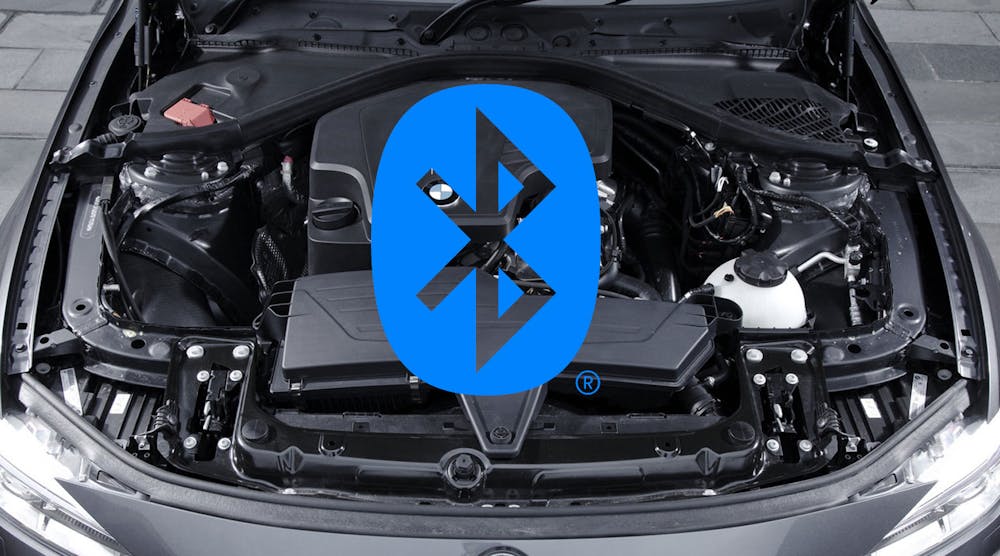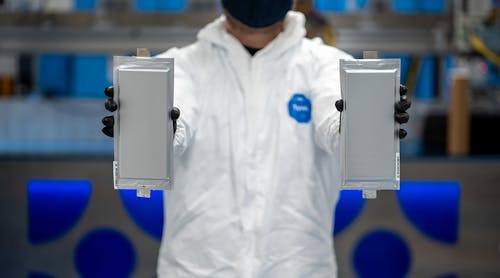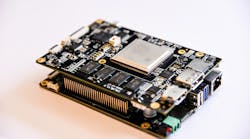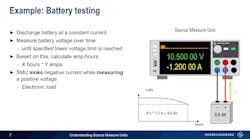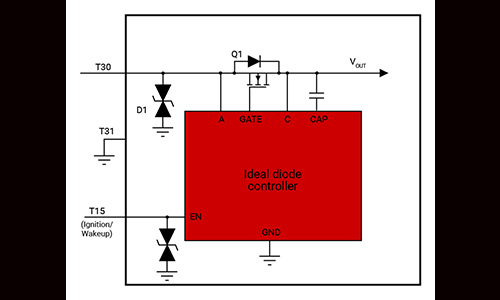Modern hybrids and full electrical vehicles (EVs) use a lithium-ion (Li-ion) battery for power. These batteries are known for providing the most energy per size and weight. While physical attributes like size and weight are important, the electrical characteristics are what determines the effectiveness of the battery.
Of serious importance is the fact that Li-ion batteries are sensitive and high maintenance. If not used or treated correctly, they can be dangerous as they catch fire and otherwise cause damage. That’s why Li-ion auto batteries are accompanied by a battery-management system (BMS) that monitors and controls battery usage. The BMS is a complex and expensive subsystem, but it’s a necessity in modern EVs and hybrids.
Most BMS connect to the vehicle by way of a costly wiring harness that takes up space and adds weight. One way to eliminate that wiring harness is to establish awireless connection between the BMS and other equipment.
Sponsored Resources:
- Exploring connectivity trends for Bluetooth® Low Energy in the car
- Three questions to ask about wireless BMS for hybrid and electric vehicles
- Connect: Why wireless for battery management systems (BMS)?
An Introduction to Battery-Management Systems
The purpose of a BMS is to monitor, control, and protect the Li-ion battery. These tasks are accomplished with a special data-acquisition or telemetry system. Some of its functions include:
- Monitor individual cell voltages in the battery.
- Measure overall battery voltage and current output.
- Measure the temperature of the battery and its surroundings.
- Control the charging of the battery.
- Monitor the discharge of the battery.
- Monitor overvoltage or undervoltage conditions.
- Determine the condition of the battery.
The key measurements that need to be made involve the output voltage of each cell in the battery. Special battery-management integrated circuits (BMICs) connect to each cell to make these measurements. In addition, the temperature at several points in the battery is measured. This data is captured and sent to an embedded controller.
The BMS also uses its measurements to perform calculations that provide additional data points to determine the state of the battery. A dedicated microcontroller takes care of this in most BMS. The system also includes a communications element to send the measurements and calculations to storage or display. Wired serial data links have been utilized, but a better choice is a wireless link.
Exploring Connectivity Trends for Bluetooth Low Energy
Is a wireless BMS a good idea? Wired systems are generally very reliable although they do deteriorate over time and are very difficult to access, maintain, and repair. A wireless link can also be reliable if a good path between transmitter and receiver is established. This path is short in a vehicle, so data-transmission reliability should be excellent. That translates into a packet error rate of 10-6or better. Reliability ensures safety when there’s a malfunction.
One big benefit of a wireless connection is the elimination of the wiring harness with its multiple cables and connectors—and significant cost. The space and weight of the harness are removed, too.
Wireless is already used in most of today’s cars. The hands-free smartphone calls and various other audio connections to the infotainment system are examples. The challenge is selecting the wireless technology to integrate into the BMS.
One worthy choice is Bluetooth Low Energy (BLE), version 5.1 of Bluetooth (BT).BT is a good match up for the BMS—it’s been around for years, is very highly developed, and has proven to be a good internal automotive wireless technology. Security could be an issue, but the BLE standard takes care of that with its inherent security protocols.
Designing a Wireless BMS
An example of a BLE wireless device could offer a solution is Texas Instruments’SimpleLink CC2642R-Q1. This is a single chip featuring a powerful MCU plus a Bluetooth 5.1 Low Energy transceiver. The block diagram in thefiguresums up the main features.
The CC2642R-Q1 BLE radio operates in the 2.4-GHz ISM band shared with many other BT signals. However, its frequency-hopping spread-spectrum (FHSS) format allows it to share that spectrum with many others without interference.
发射机的输出功率通常设置为0 dBm (1 mW), but it can be set as high as 5 dBm. The receiver has a sensitivity of −97 dBm at a maximum data rate of 1 Mb/s. When the data rate is adjusted to 125 kb/s, with encoding, the receiver sensitivity jumps to −105 dBm. The radio is fully FCC Part 15 compliant. It also meets European and Japanese regulatory standards.
The internal MCU is an Arm Cortex-M4F with a clock speed of 48 MHz and plenty of RAM, ROM, and flash. There are many interfaces, including 31 GPIOs, a 12-bit ADC, two comparators, UART, SPI, and I2C.
The CC2642R-Q1 is housed in a 7- × 7-mm RTC VQFN48 package. Operating voltage is 1.8 to 3.6 V. Typical receive current is 6.9 mA, transmit current is 7.3 mA and standby current is a low 0.94 µA.
This chip is supported by the SimpleLink software development kit that includes the Bluetooth software protocol stack.
Conclusion
A wireless BMS is an optimum solution for most designs. Eliminating the wiring harness reduces weight. This, in turn, cuts costs and simplifies the manufacturing process. The BMS helps ensure safety. Finally, the IC is AEC-Q100 qualified for auto applications.
Sponsored Resources:
